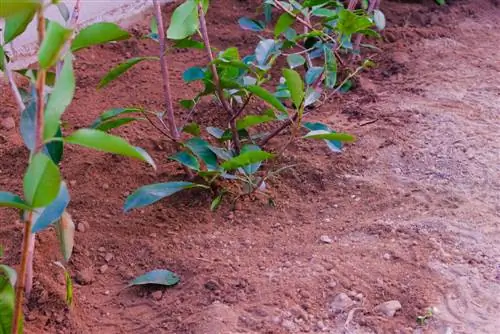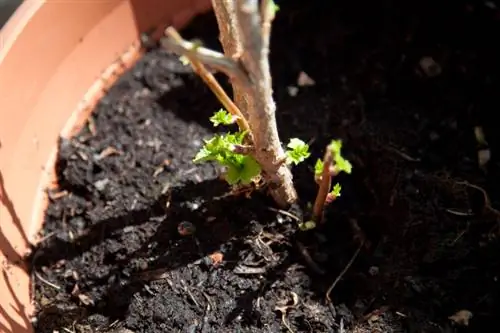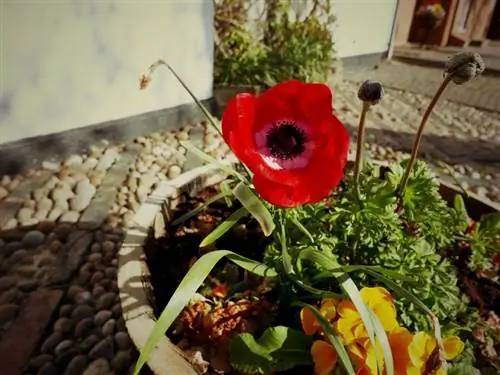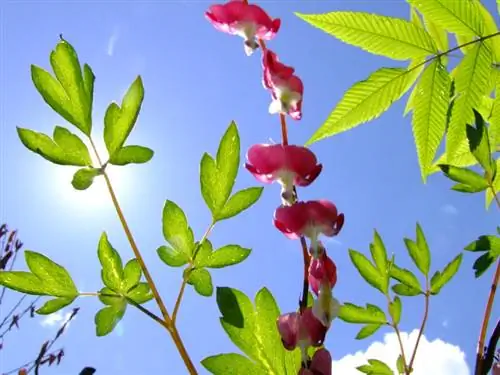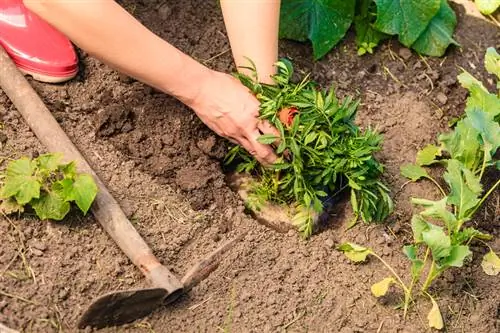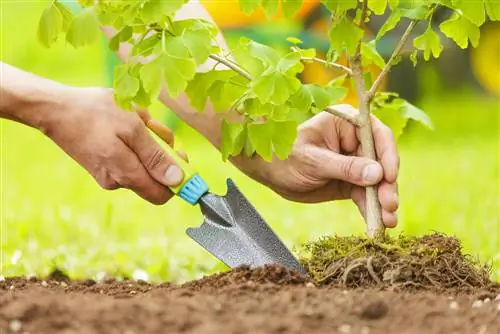- Author admin [email protected].
- Public 2023-12-16 16:46.
- Last modified 2025-01-23 11:21.
A change to a better location, a hedge thinning or a redesign of the garden can be reasons that make it necessary to transplant the loquat. Risks are minimized with well-thought-out planning.

How can I successfully transplant a loquat?
When transplanting a loquat, you should act in spring, carefully cut and dig out the root ball, cut the plant back, prepare the new location and insert the plant in the prepared hole, fill it with the excavation and then water sufficiently.
Transplanting hedges
Loquats are shallow-rooted plants that develop their roots close to the surface of the earth. Transplanting should be well planned and carried out quickly to avoid unnecessary stress for the tree.
The ideal time
Replant the cotoneaster in spring before the fresh leaves appear. This gives the shrub enough time to root in its new location until winter.
Site preparation
Dig a generous hole at the new location and mix the excavated material with compost. Provide irrigation water and a slow-release fertilizer (€10.00 on Amazon).
pruning
When digging up the plant, it is inevitable that roots will be destroyed. There are fewer roots available to support the leaves and branches. Before transplanting, cut the cotoneaster back vigorously to create a balance between roots and leaves.
Separate root ball
Use a spade to cut off the root ball around the tree, which is at least the size of the plant. Dig the root ball as deep as possible. After digging, shorten the protruding roots to the same length so that a compact root ball is created. Make sure to retain as many fibrous roots as possible.
Transportation
You can cover shorter distances with a wheelbarrow. If you have to travel longer distances to the new location, then protect the sensitive root ball with a linen bag.
Planting
Place the tree in the middle of the new planting hole so that the root ball is flush with the soil level. Fill the hole with the excavated material and water the plant thoroughly.
Repotting potted plants
The varieties of loquat grow at different rates. When cultivated in a bucket, it is repotted into a larger container approximately every two to three years. Transplanting is necessary at the latest when the plant has completely rooted through the substrate.
Minimize stress
Transplanting means stress for the loquat. It needs time, protection and nutrients so that it can grow well in the new location and develop enough fine roots. Water the plant with a growth aid made from algae extract. A garden fleece reduces evaporation and prevents drought stress.

